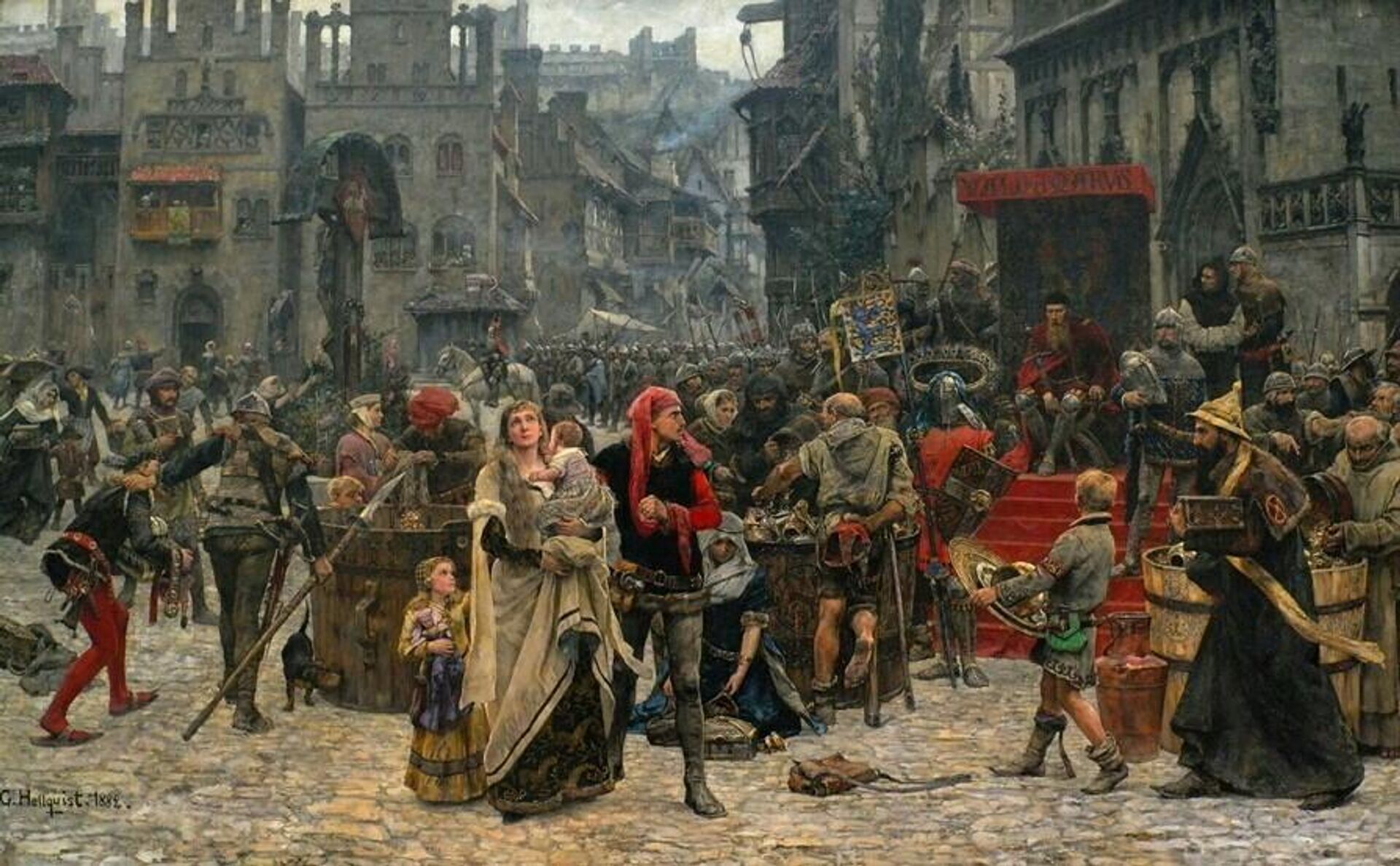Scientists Reconstruct Periods of Boom & Crisis in Medieval Europe Using Old Timber, Study Shows
00:15 GMT 27.01.2022 (Updated: 13:32 GMT 06.08.2022)

© Photo : Public Domain
Subscribe
Old wooden buildings have helped scientists track changes in construction activity as an indicator of macroeconomic development. The findings revealed the two most severe economic crises that hit premodern Europe.
Researchers used timber from historical buildings to date them from their tree rings and analyze the distribution of years of construction. By doing so, scientists managed to confirm without other historical data several periods of socio-economic prosperity and decline between 1250 and 1699, known to historians mostly through written sources, according to a study by a consortium of scientists across Europe, published in Frontiers in Ecology and Evolution.
Timber illustrated the intensity of building activity in medieval Europe and, by that, showed how European regions were affected in different ways and at different times.
When there are too few written historical sources to reconstruct large-scale demographic and social changes, environmental indicators can be used instead. For example, the number of shipwrecks has been used in past studies to determine the intensity of trade, pollen to reconstruct agricultural production, and anthropometric measurements of skeletons to assess living standards.
"The ability to reconstruct changes in building activity in time and space, independent of written sources, provides valuable new insights into times of crisis and prosperity in the past. Here we show that felling dates are a good indicator for changes in societal wellbeing and demographics," said lead author Dr. Fredrik Ljungqvist, associate professor of History and Physical Geography at Stockholm University, Sweden.
Scientists examined felling dates of 54,045 pieces of wood with reference to the area - oak, spruce, pine, larch and spruce. They used only the wood that had the outermost (youngest) ring, which allowed them to accurately determine the year of felling by comparison with the dendrochronological record.
Scientists decode 450 years of boom and crisis in Europe from ages of building timber https://t.co/WRbzHfW9Oo pic.twitter.com/qrcCqJRHnO
— Zyite.news (@ZyiteGadgets) January 26, 2022
They compared changes in building activity across the British Isles, Scandinavian countries, France, the Benelux countries, Switzerland, and northern and southern Central Europe during the Late Middle Ages and Early Modern period. In addition, links were established with other reconstructed economic and environmental indicators, such as grain and wine prices, consumer price indices, growing season temperature, soil moisture, and water table.
The key finding was said to be the low overall degree of synchronicity in construction between some regions. Another conclusion the researchers made is that periods of low building activity occurred during two Alpine ice maxima (around 1300-1370 and 1600-1670) during the Little Ice Age.

A painting of Carl Gustaf Hellqvist (1851–1890) "Valdemar Atterdag holding Visby to ransom, 1361"
© Photo : Public Domain
The 14th century in Europe is known as a period of struggle and crisis, as difficult weather conditions caused sharp economic decline, mass famine and the infamous plague that killed nearly a third of the European population. Similarly, another peak of the Little Ice Age 300 years later caused another pandemic as well as a series economic and social problems that led to a pan-European and world crisis, aggravated by the Thirty Years' War.
"Building activity showed an unprecedented decrease in much of Europe during the Thirty Years' War. Differences in the magnitude of the decrease agree remarkably well with the known magnitude of the population decrease due to war in different regions of Germany. This shows that our reconstructed building activity history accurately captures demographic changes," said Ljungqvist.


